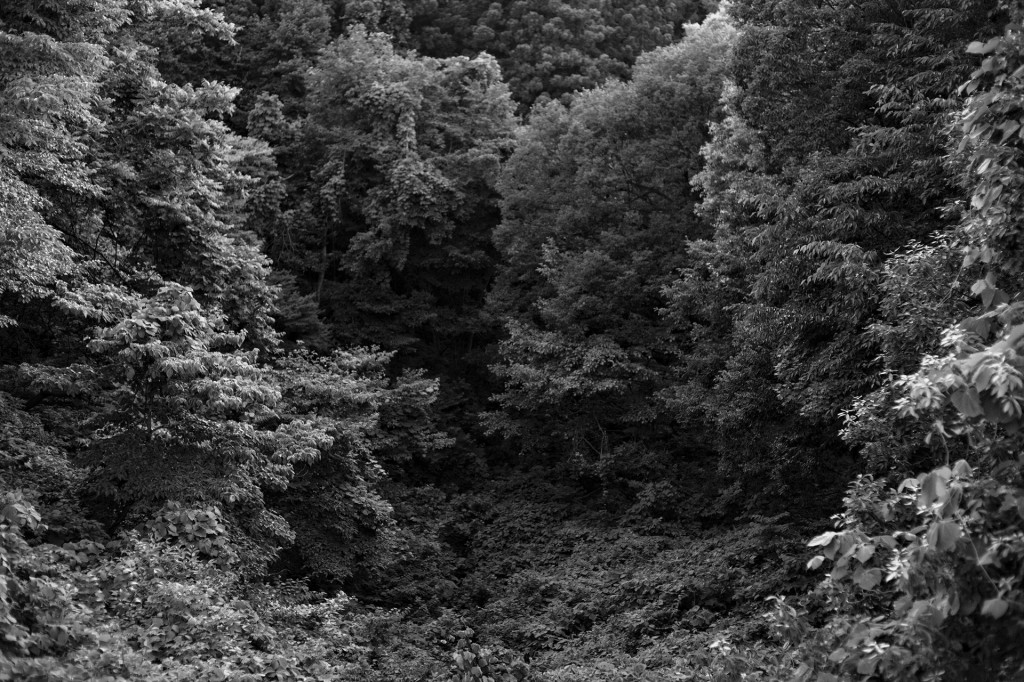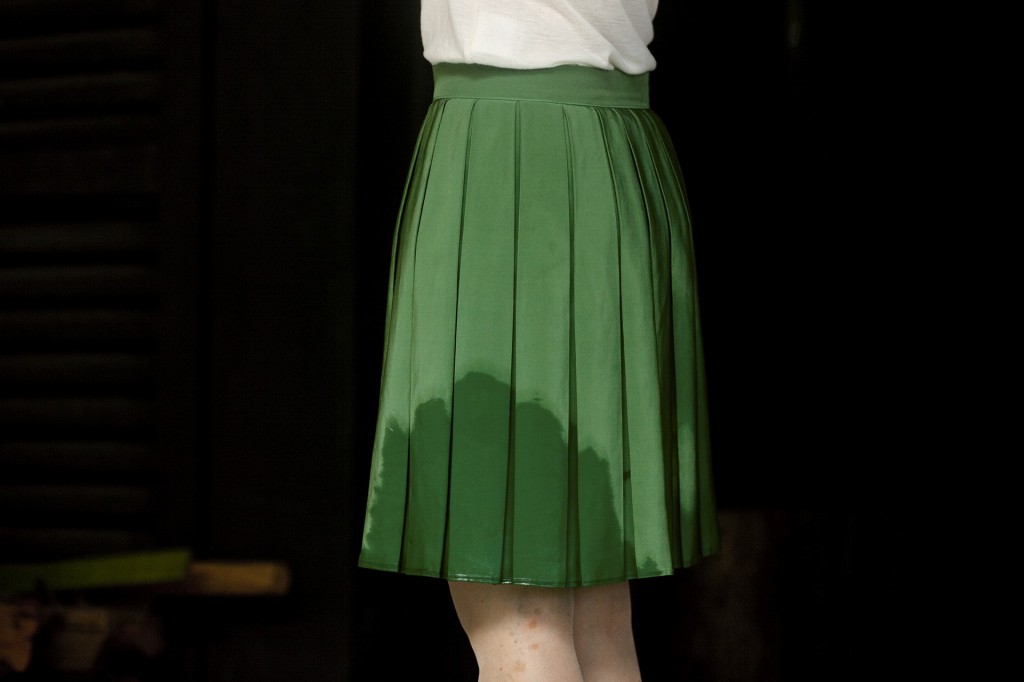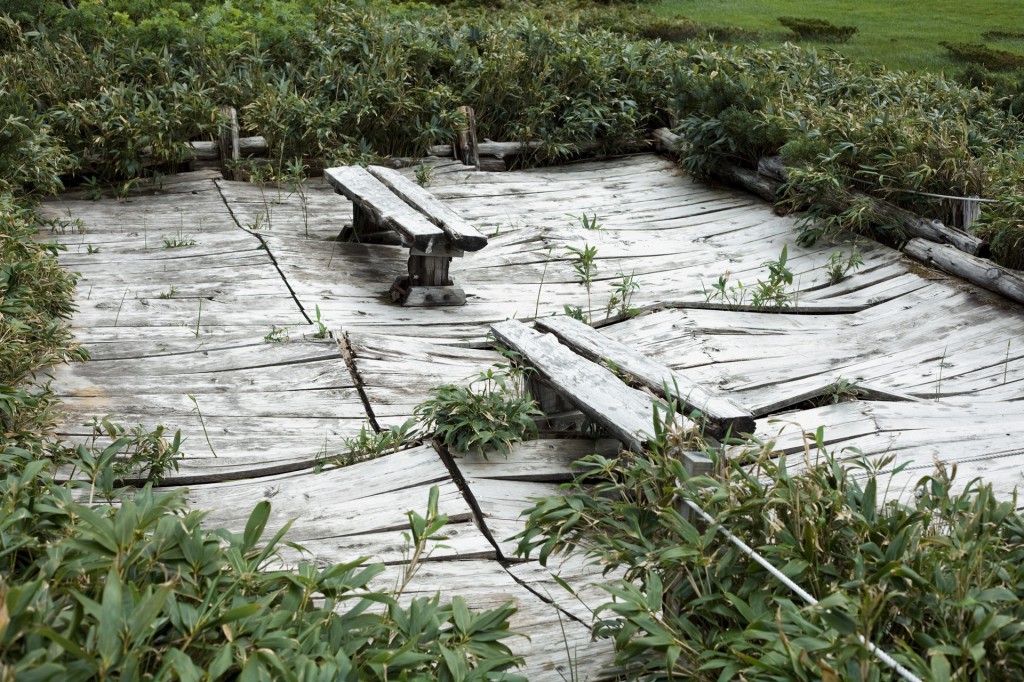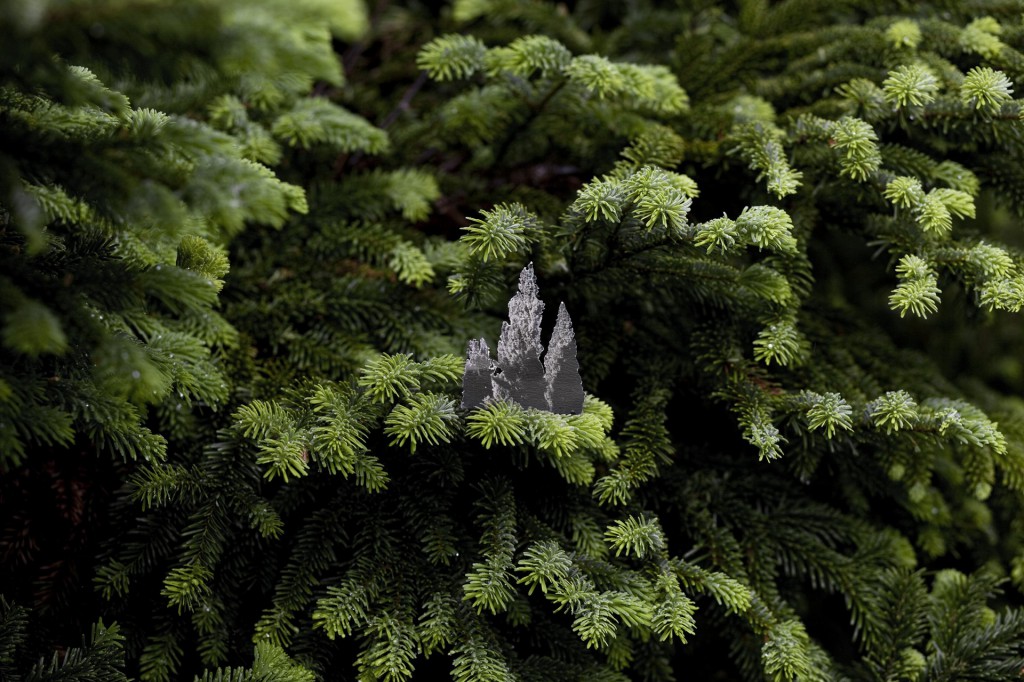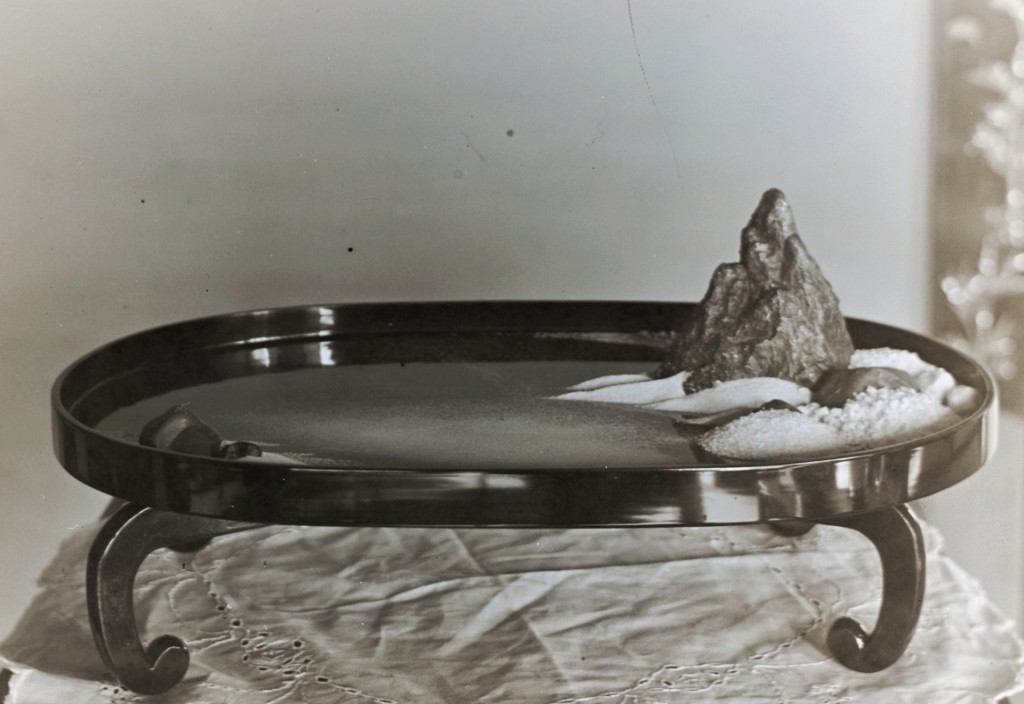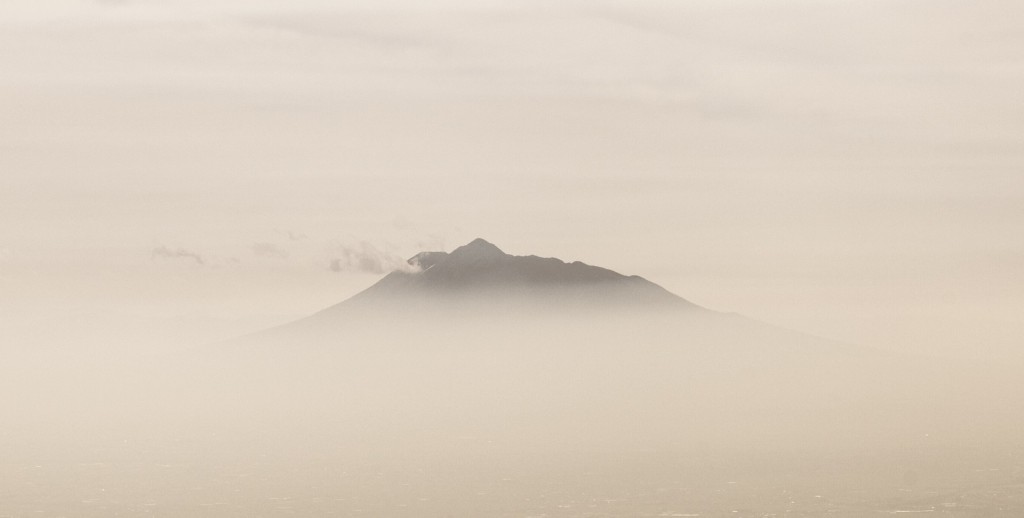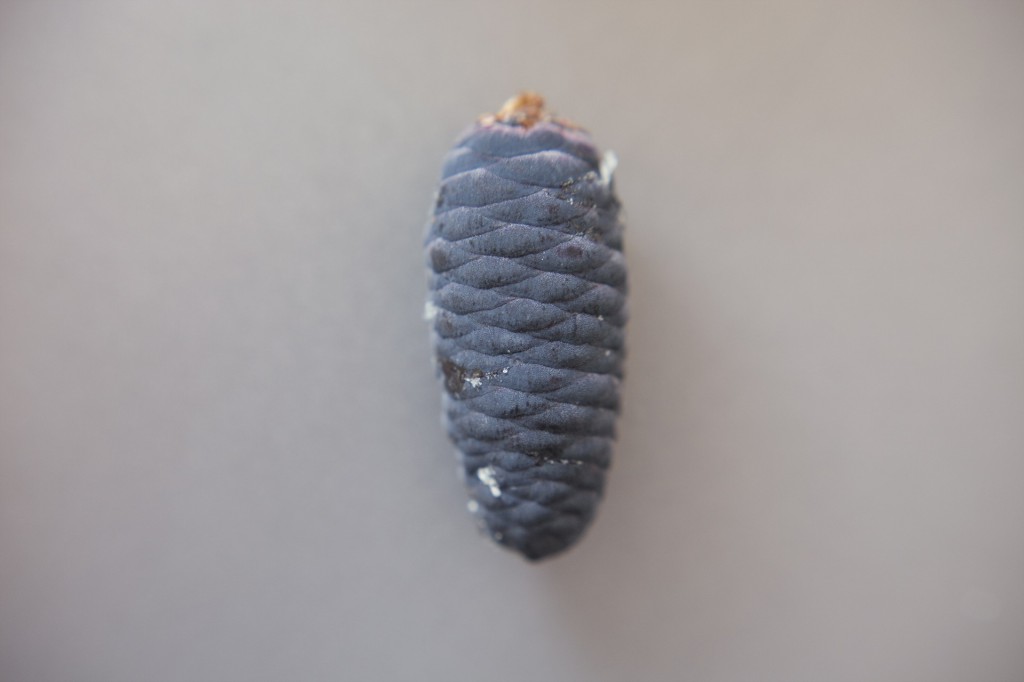
Textures (Kime to Kehai)
July 28 (Sat) ~ September 17 (Mon), 2012 10:00 - 18:00 / Free
Anni LEPPÄLÄ
アンニ・レッパラ
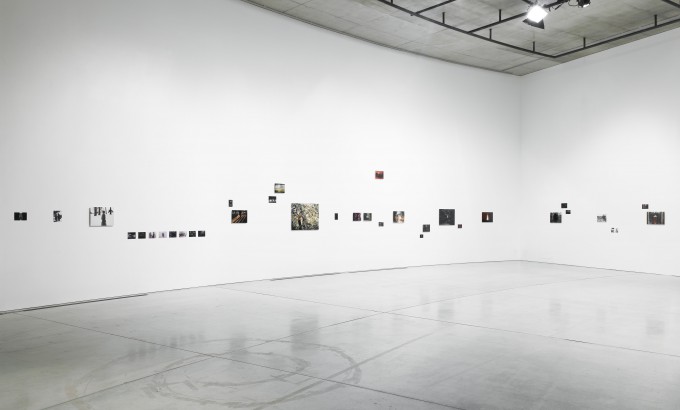
Untitled, work in progress photo installation, 2012
Dimension variable
Type C prints on Aluminum Mount (Photos printed in Helsinki), Inkjet Prints (Photos taken and printed in Aomori)
Photo: YAMAMOTO Tadasu
Covering Visible Reality and Foregrounding Invisible Worlds
KONDO Yuki
Among Finnish artists who work in photography, those who were part of Aalto University (formerly University of Art and Design Helsinki) as students or teachers are known as the "Helsinki School." Originally, this was just a number of loosely tied people related with the university’s educational programs training students to be artists and advance their artistic careers. Eventually, through their own art gallery (Gallery Taik, Berlin), the Helsinki School artists have become more active and enhanced their visibility, by exhibiting their works at the gallery, having their works published as photo books, and presenting themselves as a sort of group in international exhibitions and art fairs. Of course, there are plenty of photographers in Finland who do not belong to the school. When I visited Finland for artist research in 2005, I met various artists working with photography, not only from the University of Art and Design Helsinki, but also from the Finnish Academy of Fine Arts. I asked one of the artists belonging to the Helsinki School about how the two groups were different. He told me that the latter put importance on concept, in most cases choosing photography just because it would fit what they wanted to express, while the former tended to focus on specific properties of the medium. While this does not explain everything, it seemed true that many of the Helsinki school had strong interests in such aspects — photography as a recording media, time and light in photography, the way photography captures reality, compositions of photographs as renderings from painting, and so on.
Anni LEPPÄLÄ is an artist from the Helsinki School. Considering that it was the 1980s when photographers in the school's earliest generation were most active, Leppälä, born in 1981, could be said to belong to a younger generation. She is conscious, too, about specific features unique to photography, as pointed out by the photographer mentioned above.
Using everyday objects and familiar scenery, Leppälä sets up, composes, and fabricates photographic images that seem to depict scenes from some kind of story. Her sophisticated settings often involve things familiar to her — her family members, small items related to her family history, her family's old house, her sisters, and so on.
The development of her work began in 2002 with an ongoing series of photographs set in her grandmother’s old house [fig.1]. Isolated from the flow of time in the outer world, the house seemed to have its own speed of time, where the artist found small objects and photographs, related to her family and relatives, in which time seemed frozen. Old images of her family members showing their appearance in a way never-before-seen by her, and the objects evocative of their lives made her strongly aware of the difference between the flow of time in the past and that in the present. According to the artist, she then obtained a strong sense that the time that used to be certainly present had passed and been lost, which she then tried to capture in her photographs[i]. Since then, capturing momentariness amongst the flow of time has been an important artistic methodology of the artist. Indeed, nothing other than photography seems to be able to capture frozen time or to contain a flow of time different from the present. It is a kind of illusion only possible through the medium called photography.
In Leppälä's photographs, figures and objects often appear unclear, by being partly or totally hidden, out of the frame, or intentionally blurred [fig.2]. The artist says she intentionally creates such imperfect areas in order to emphasize passing of time[ii]. This "imperfectness" gives her photographs a peculiar atmosphere. Due to the unclear imagery as a result of the "imperfectness," some of her photographs present faint yet impressive images, as if being something like nameless moments that have passed just like scenery viewed through the windows of a moving train, remaining only in the deep area between consciousness and unconsciousness, unlike the "eternal moments" vividly etched in our brains accompanied by memories of entire events. This way of dealing with imperfectness by hiding or blurring certain areas also deftly creates anonymity for her familiar subjects, so that the entire resultant image is given a seemingly stereotypical, "clearly Finnish" atmosphere[iii]. Therefore, even though deeply connected to her personal memories in reality, her subjects never tell particular stories in her photographs. Deprived of their own names, the subjects have turned into surreal images that somehow evoke imagination toward various possibilities. Her photographs, therefore, are perceived by the viewer as scenery where names, times, and places are somehow suspended, where the spiritually close relationship between the subjects and the photographer has been hidden, and only the feeling of intimacy remains.
It can also be said that the things such as miniatures and old photographs the artist shoots within her photographs are also aimed at this "imperfectness" [fig.3]. Thee miniatures or old photographs being photographed by the artist appear to be representations of a different reality, at first glance. Gradually, there we find something faintly weird, a somewhat vague sense of fakery and strangeness. Such features reinforce the unreality of the worlds depicted in her photographs, suggesting that they are in fact artistic fabrications. In another aspect, imperfectness also strengthens the impression of the human figures, such as girls with their faces covered [fig.4] or a human body cut by the frame [fig.5]. As if being a protagonist or character in a story, each of them functions as a guide who leads the viewer to a mysterious world.
Presenting mysterious and evocative images with such characters as guides, her photographs induce the viewer to explore different meanings hidden from the simple surface, just like a myth or a fairytale. Her work obtains some sort of narrativity due to this. Furthermore, Leppälä tries to set the narrative in multiple directions rather than a fixed, single one, by composing different images. Each time she exhibits her work, the artist combines past and new works together. There is a strong sense of "installation," where, for example, photographs of different sizes are scattered on one wall at various heights, while only one tiny photographic work occupies another entire wall.
Her work exhibited in the gallery at ACAC was also composed of new and existing pieces together. Nevertheless, as the work's title Work in Progress Photo Installation suggests, it was not complete at the beginning, but every week, a number of new pieces that had been made on site were added, updating the whole installation. This was a new challenge for the artist.
Leppälä's practice in the residency started with photographing cones of Maries' Fir trees, which had caught her interest during her research before coming to Aomori [fig.6]. Called Aomori-todomatsu or Oh-shirabiso in Japanese, and designated as the "municipal tree" of Aomori City, it is an evergreen coniferous tree in the family of Pinaceae, with Mount Hakkoda, rising behind ACAC, being the north end of its distribution. Most probably Leppälä discovered this tree through the name Aomori and/or its area of distribution, but then, what attracted her was the tree’s huge purple cone. While photographing those cones, the artist frequented an antique shop in the city to acquire old postcards with photo images and glass plate negatives, and made them additional subjects of her photographic works [fig.7].
New pieces created during the course of this whole process were digitally printed out and put directly on the wall, between the existing works mounted on aluminum. The seemingly random composition, however, contained a sort of regularity, in terms of connections of colors and forms across the works. It was perhaps a result of Leppälä being impressed by the lines of the mountains surrounding ACAC, the peculiar color of the Maries' Fir cones, which was the starting point of the work, and/or the overwhelming greenness in the region in early summer. It was not about creating aesthetically minimal effects through repetition, but rather, forming tiny pathways through faint similarities of forms and colors, guiding the viewer smoothly from one image to another. The sequentiality was not linguistic or narrative, but visual, where the viewer's gaze would naturally follow and connect different images. Furthermore, through links of images whose contents (linguistic and narrative elements) were seemingly unrelated, the possibility of hidden spaces unexpectedly lying between the lines was presented, suggesting the world was in fact full of branching points.
Leppälä says that the essence of photography as artwork lies in rescuing or saving an unseen or unseeable thing, by transforming it into another invisible thing[iv]. Fixing the appearance of something real in front of the camera, photography always deals with the subject's surface. The resultant image, however, does not always show what is real, as it is. By simple means, you can make up a makeshift world that still has a certain connection with the reality. That is probably why Leppälä's photographs give an impression of a "nowhere moment" that belongs to no speci_c context, transcending the usual sense of time, unlike any moment in reality. Leppälä's attempt is not to visualize the reality we cannot see, but rather, to trigger each viewer to imagine it, by creating space between the lines through combinations of different images or motifs (both in a single photo or across multiple photos) to be filled in with imagined invisible elements. As discussed above, this is an approach conscious of the specific nature of photography as a medium. Leppälä's photographs have been regarded as something that stimulates unconscious feelings or deep psyche. This must be because her work, although capturing the real world by virtue of photography, suggests the viewer a somewhat unreal imaginative world, and stirs their psyche to shift between the two worlds.
Translated by OKUMURA Yuki + Linda DENNIS and Greg WILCOX
[i] Anni LEPPÄLÄ's lecture titled "Mystery of the visible" at Aomori Contemporary Art Centre, August 12, 2012.
[ii] Ibid.
[iii] Taina MYLLYHARJU (Museum Director of Tampere Art Musum), Anni Leppala / Young Artist of the year 2010, Tampere Art Museum Publications 142, 2012, p.12. (catalogue)
[iv] Ibid.
***
Works in ACAC
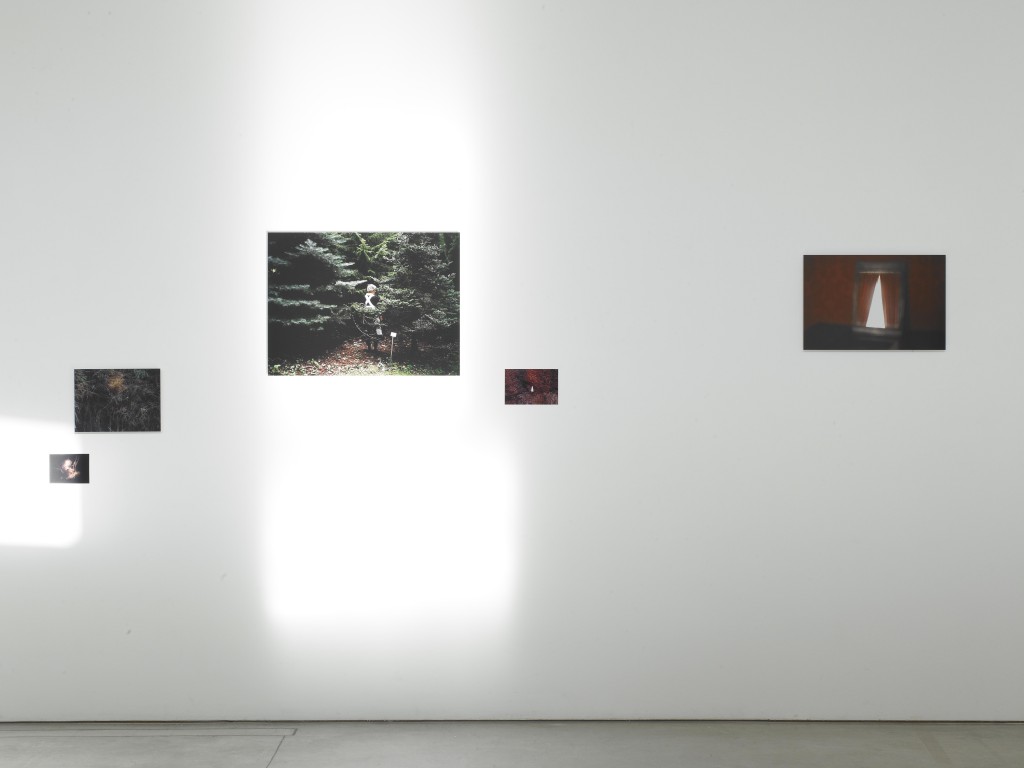
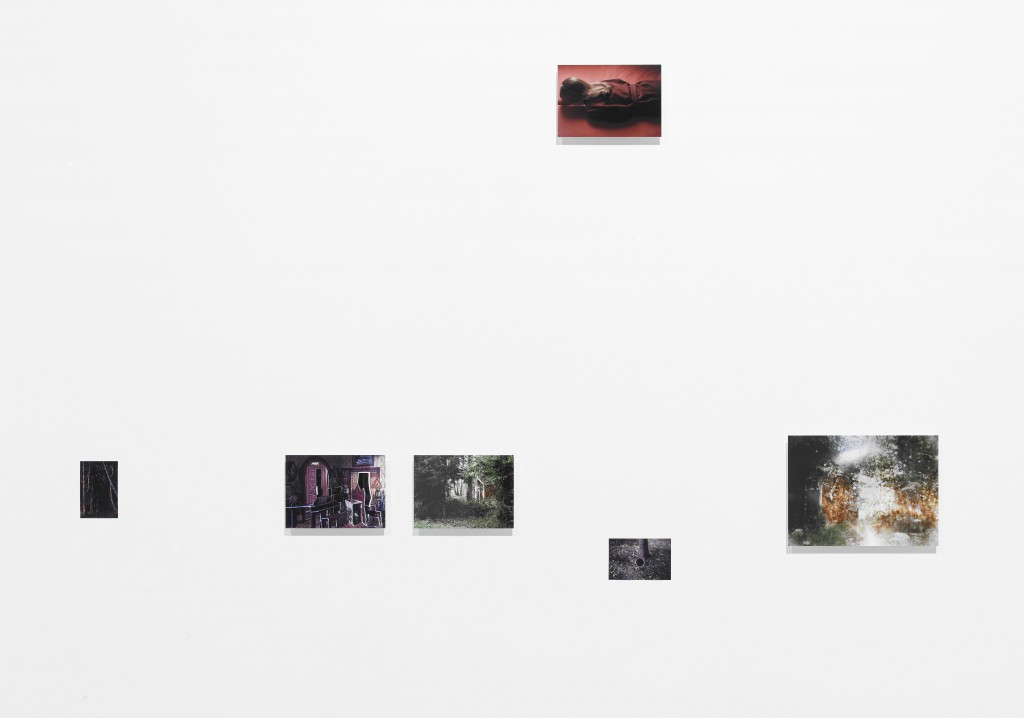
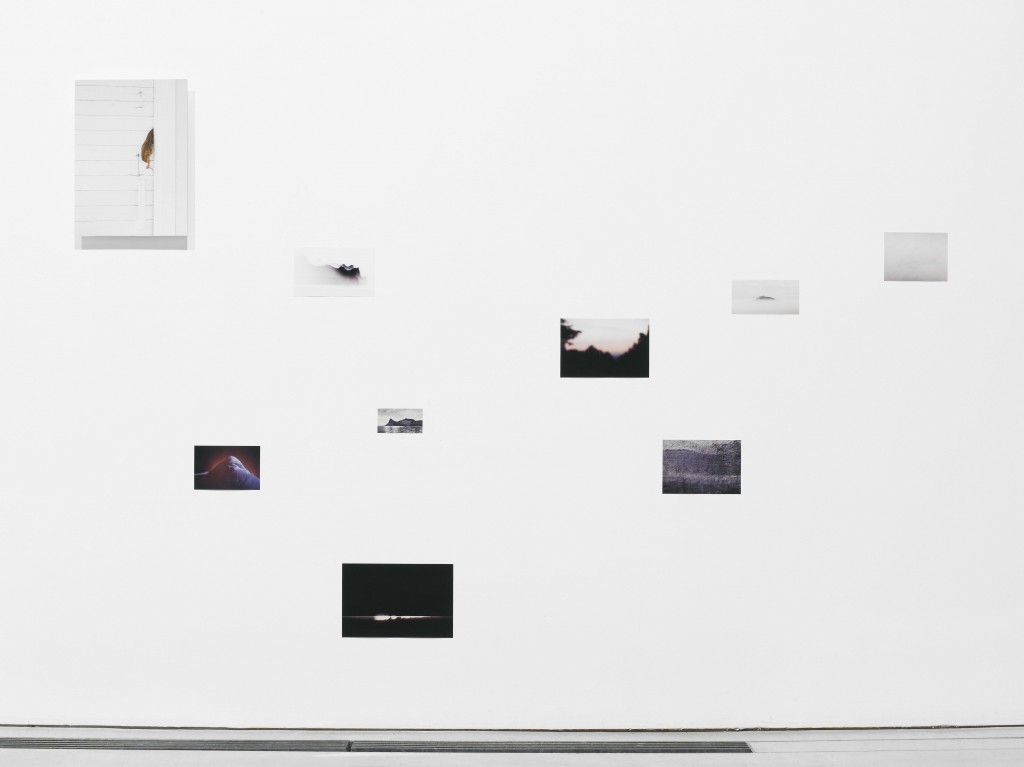
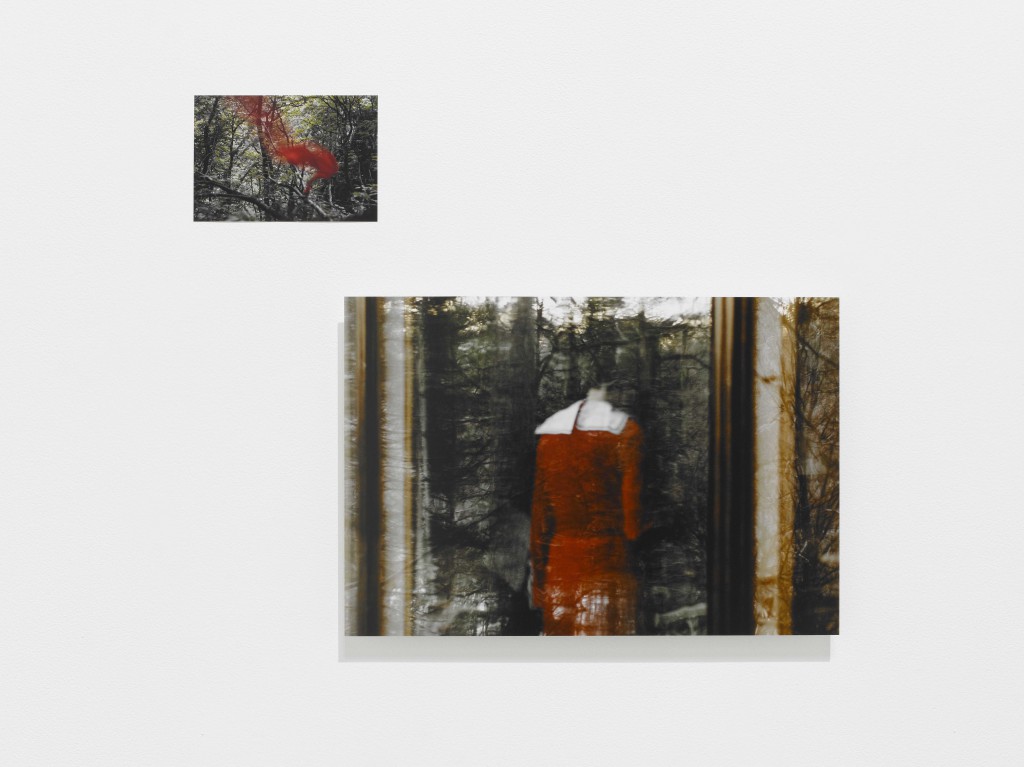 Untitled (work in progress photo installation), 2012
Untitled (work in progress photo installation), 2012
Dimension variable
Type C prints on Aluminum Mount (Photos printed in Helsinki), Inkjet Prints (Photos taken and printed in Aomori)
Photo: YAMAMOTO Tadasu
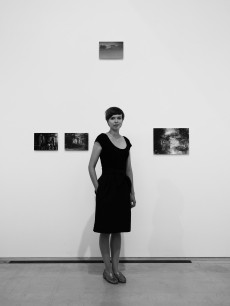
Anni LEPPÄLÄ
Photo: YAMAMOTO Tadasu
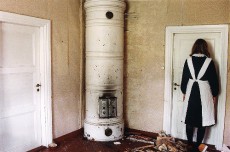
fig.1 The House, 2002
31.5x47cm, c-print on aluminium

fig.2-1 Doors, 2006
21x31.5cm, c-print on aluminium
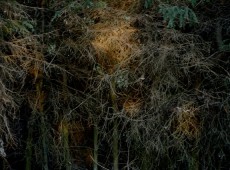
fig.2-2 Fence II (In the evening), 200
21x28cm, c-print on aluminium.
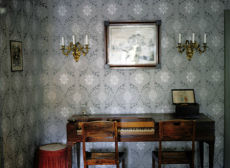
fig.3-1 Blue room, 2008
21x28cm, inkjet print on aluminium.
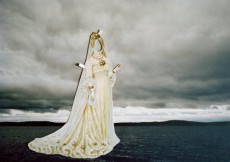
fig.3-2 Landscape, 2004
21x31.5cm, c-print on aluminium.
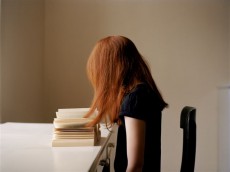
fig.4-1 Reading, 2010
31.5x42.5cm, c-print on aluminium

fig.4-2 Untitled (winter portrait), 2010
40x26cm, pigment print on aluminium
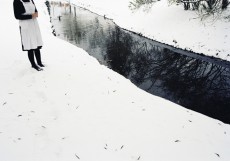
fig. 5 The River, 2004
47x69cm, c-print on aluminium
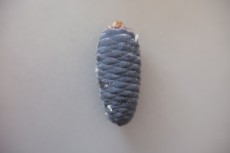
fig.6 New work of ACAC.
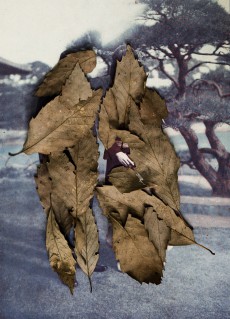
fig.7 New work of ACAC.
fig.1-fig.7: © Anni LEPPÄLÄ
肌理と気配-Textures
2012年7月28日(土)~9月17月(月) 10:00 - 18:00/無料
air2012-2ja
アンニ・レッパラ
Anni LEPPÄLÄ
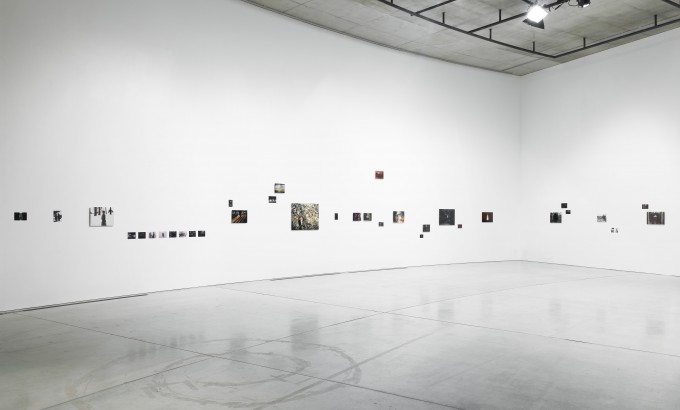
《Untitled(ワーク・イン・プログレス・フォトインスタレーション)》、2012
サイズ可変
タイプCプリントにアルミ二ウムマウント(フィンランドで制作した写真)、インクジェットプリント(青森で制作した写真)
撮影:山本糾
見えている現実の不可視化と見えない世界の可視化
近藤由紀
写真表現を行うフィンランドの作家のうち、現アールト大学(旧ヘルシンキ芸術デザイン大学)の出身者および教師からなる一群は、「ヘルシンキ・スクール」と呼ばれている。もともとは同大学の教育プログラムと関連したアーティスト養成およびキャリア・アップの試みであったが、ベルリンに設けられたギャラリー・タイクを中心に作品を発表したり、写真集を刊行したり、国際的な展覧会やアートフェアへ一種のパッケージとして作品を出展するなど積極的な活動を展開し、知名度を高めている。ヘルシンキ・スクールではない写真の作家もフィンランドには多く、2005年に作家調査のために同地を訪れた際、ヘルシンキ芸術アカデミーとヘルシンキ芸術デザイン大学の二校出身の写真表現を行う作家に多く出会った。ヘルシンキ・スクールの一人でもある写真家に傾向の違いを尋ねると、前者はコンセプトを重視し、写真はどちらかといえばその表現にたまたま合うものとして選択されている作品が多く、後者は、写真というメディアの特性を意識した作品が多い傾向があるとの答えが返ってきた。もちろんそれが全てではないにせよ、そう思って見ると、ヘルシンキ・スクールの作家の作品において、写真メディアの特性―記録メディアとしての写真、写真における時間や光、記憶の問題、現実を写すということ、絵画から借用した構図など―への関心をしばしば見出すことができる。
アンニ・レッパラは、このヘルシンキ・スクールのアーティストである。ヘルシンキ・スクール初期の写真家たちが1980年代に活躍した作家であるとすれば、1981年生まれのレッパラは、その中でも若い世代に属するといえるだろう。そしてレッパラもまた、上述の写真家が指摘したように、写真のメディア特性を意識した制作を行っている。
レッパラは、身近なものや身の回りの風景を使いながら、何かの物語の一場面を作り上げるかのように場面を構成、編集、加工して撮影を行う。その洗練されたセッティングには、レッパラにとっての親しいモノたち――家族の写真や家族の歴史にまつわる小物、古い家や姉妹たち――が頻繁に登場している。彼女の作品の出発点になったのは、2002年
に開始されたレッパラの祖母の古い家を舞台に撮影された写真のシリーズ作品である[fig.1]。レッパラは外の時間から切り離され、時が異なる速度で流れているような古い家で、時が止まったままのような自分の家族・親族に関連する小物や写真を見つけた。見知った家族の昔の姿やそれを彷彿とさせる小物は、過去と現在の時間を強く意識させるものであったに違いない。レッパラはそこで確実に存在した時間が過ぎ去り、失われているという感覚を強くし、それを作品として写真に収めようとしたのだという[1]。そしてこの過ぎ去る時間の「瞬間(momentariness)」を捉えるということがレッパラの重要なアプローチの仕方となった。凍らされたような時間を捉えること、異なる時間の流れを内在させること、それは写真というメディアが可能にする一種のイリュージョンといえるだろう。
レッパラの写真では、しばしばその登場人物やモチーフが隠されたり、画面に収まっていなかったり、あるいはわざとぼかされたりして不明瞭なまま提示される[fig.2]。レッパラは写真にわざと不完全な部分をつくり、通り過ぎる時間を強調するという[2]。この「不完全さ」はレッパラの写真に独特の雰囲気を賦与する。「不完全さ」がもたらす不明瞭さによって、いくつかの写真は、前後関係を伴って記憶に刻まれる「永遠の一瞬」としての鮮明なイメージではなく、車窓の風景のように過ぎ去り、意識と無意識の境界領域の下に残る無名の一刻としてのイメージのように、不鮮明だが印象的である。レッパラの写真は「明らかにフィンランド的」[3]と指摘されることがある。被写体の部分を隠したり、ぼやかしたりすることで不完全にする処理は、レッパラにとっての親しい被写体たちを巧みに匿名化する。そのためにイメージ全体は、レッパラの個人的な歴史に依拠したモチーフであるにもかかわらず、いわゆる「フィンランドっぽい光景」にみえるのだろう。
無名の存在となったこれらは、ありふれた事物でありながら別の想像を喚起させるイメージとして加工されており、撮影者との内面的距離の近しさが強調されているというよりは、親密さだけを残したまま、名前も時間も場所もどこか宙づりされたような光景としてみる者に手渡されている。
レッパラが写真に持ち込むミニアチュールや古い写真などもこの「不完全さ」を担っているといえるだろう[fig.3]。ミニアチュールや写真は、撮影されると一見本物に見える。しかしそこにはやはりちょっとしたずれのようなもの、そこはかとないまがい物感が漂い、異和を感じさせる。これらはレッパラの仕立て上げた写真世界が作り物であることを示唆する。一方で「不完全さ」ゆえに印象を強める顔を隠した少女たちや[fig.4]画面に見切れる人間の体は[fig.5]、物語の主人公やキャラクターのように、ある不思議な物語世界への水先案内人となる。
こうした水先案内人的キャラクターの存在や、謎めいた、思わせぶりなイメージは、みる者に表面的な単調さとは別の裏の意味を探らせるように仕向ける。それは神話や寓話を前にした時に似ていて、それがレッパラの作品にある種の物語性を与えている。だがレッパラはこれを固定させたり、一方向には向かわせたりせず、それぞれが多方向へと向かうようイメージの組み換えを行う。レッパラは作品を発表する場面において、過去の作品と新作を取り混ぜながら展示しており、そこではしばしば、サイズが異なる写真が、壁面に散りばめられるように様々な高さに展示されたり、小さな写真作品が空間にぽつんと配されるなど、インスタレーション的な要素が強い。
今回のACACでの展示でも、新作と過去作が合わせて展示された。しかしそれは一つの完成としての展示ではなく、《ワーク・イン・プログレス・フォトインスタレーション》と題されたように、最初に構成したインスタレーションとしての展示に、滞在制作作品を毎週数点ずつ加え、インスタレーションを更新していくという展示であった。これはレッパラにとって初の試みでもあった。
レッパラの滞在制作は、こちらに来る前の調査で関心を抱いていたアオモリトドマツの実の撮影から始まった[fig.6]。アオモリトドマツはオオシラビソとも呼ばれる日本特産の、マツ科モミ属の常緑針葉樹で、ACAC背後にある八甲田山がその分布の北端であり、青森市の「市の木」にも指定されている。おそらく、アオモリという地名と分布の場所からのリサーチであったのだろうが、レッパラはその巨大な紫色をした球果に惹かれ、これを撮影することから制作がスタートした。同時にレッパラは市内の古道具屋に足を運び、古い写真のついた絵葉書やガラスネガを購入し、撮影対象に加えた[fig.7]。
こうして新しく制作された作品は出力され、アルミニウムマウントされた過去作品の間に、壁に直貼りされ加えられていったのだが、そこにはある種の規則性もみられた。それは色彩と形の連続性である。レッパラにとって青森で見られた周囲を取り巻く山の稜線が印象的であったことも、あるいは特徴的な色のアオモリトドマツの実のリサーチから始めたことも、ACAC周囲の初夏の圧倒的な緑も影響があったかもしれない。だがそれらはミニマルな繰り返しの効果を造形的に狙ったというよりは、その僅かな共通性が一つのイメージから次のイメージへとみる者をスムーズに誘導していく小さな道筋のようである。そこでは言語的、物語的な連続性ではなく、目が自然と追ってしまう視覚的連続性によって、イメージとイメージが結びつけられている。それは内容的(言語的、物語的)には関係のなさそうなイメージとイメージを結びつけるばかりではなく、イメージとイメージの結合が作り出す思いがけない行間があることを示唆し、たくさんの分岐点のある世界を提示する。
レッパラは見えていないものや目に見えないように見える現実を、見えないものに変換して救い出すことが芸術作品としての写真の本質であるという[4]。目の前にある現実の表面を定着させる写真は、常に対象の表面を扱っている。一方でそれが常にありのままの現実かというとそうではなく、ちょっとした方法により、現実と関連性をもった仮構の世界を現実の中に作ることができる。だからこそレッパラが作り出す写真は、現実のある一瞬というよりは、時間性を超えた「どこにもない一瞬」にみえるのかもしれない。レッパラは私たちには見ることができない現実を作品によって見えるようにするのではなく、見えない現実を想起させるように、イメージとイメージ、モチーフとモチーフの組み合わせによって(複数の写真においても、一枚の写真においても)、見えない行間を作り出す。そしてその見えない行間を、見えない現実に対応するものとして提示することにより、そのありようを鑑賞者ひとりひとりに想像させ、現実に依拠していない新たな「見えない現実」を立ち上げる。
そしてそれは写真というメディアの性質を意識したアプローチでもある。レッパラの写真がしばしば無意識の感情や深層心理を刺激するとみなされるのは、写真によって現実世界が撮影されていながらも、どこか非現実的にみえる想像的な現実を写真の中に見ることにより、現実の世界と想像の世界の間で精神が揺り動かされるからだろう。
***
滞在制作作品



 以上すべて《Untitled(ワーク・イン・プログレス・フォトインスタレーション)》、2012
以上すべて《Untitled(ワーク・イン・プログレス・フォトインスタレーション)》、2012
サイズ可変
タイプCプリントにアルミ二ウムマウント(フィンランドで制作した写真)、インクジェットプリント(青森で制作した写真)
撮影:山本糾

fig1. 《The House》、2002
31.5x47cm、アルミニウムにCプリント
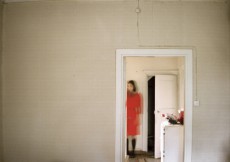
fig.2-1 《Doors》、2006
21x31.5cm、アルミニウムにCプリント
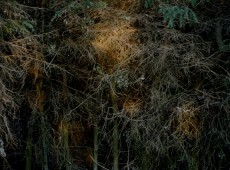
fig.2-2 《Fence II (In the evening)》、2009
21x28cm、アルミニウムにCプリント
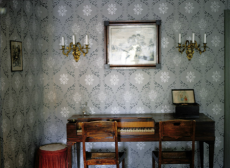
fig.3-1 《Blue room》、2008
21x28cm、アルミニウムにインクジェットプリント

fig.3-2 《Landscape》、2004
21x31.5cm、アルミニウムにCプリント
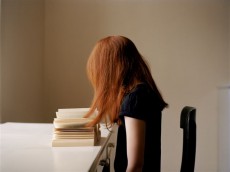
fig.4-1 《Reading》、2010
31.5x42.5cm、アルミニウムにCプリント

fig.4-2 《Untitled (winter portrait)》、2010
40x26cm、アルミニウムにサープリント

fig.5 《The River》、2004
47x69cm、アルミニウムにCプリント

fig.6 ACACでの新作。

fig.7 ACACでの新作。
fig.1~7まで© Anni LEPPÄLÄ

